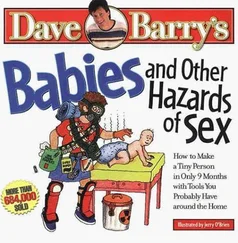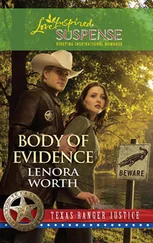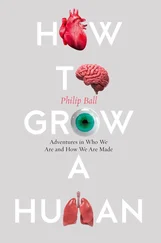A force without materiality looks indistinguishable from magic, but mathematics is what makes the reality of gravity testable. The lack of visible means was first criticised, then overlooked, and finally forgotten about.
If they don’t depend on true evidence, scientists are no better than gossips.
Penelope Fitzgerald (1916–2000), The Gate of Angels
5 | Science is an attempt to make knowledge collective. Science separates out from the world what can be repeated. Scientific experiments are repeatable (in theory at least) by anyone, ideally not just any competent human but any competent alien. Art is collective evidence of shared experience too, but science goes further; its knowledge means to be universal, not ‘merely’ human.
6 | Science searches for evidence of stability in the world out there. At one time we saw stability in the so-called fixed stars, until it was discovered that they are not fixed, just moving very slowly relative to each other, and only appear fixed because they are so far away. We used to think space and time were immutable, until Einstein showed otherwise. Today we begin to wonder if even the speed of light is a constant.
7 | Science organises the meaning of the world into what it is hoped are irreducible statements called the laws of nature, but every seemingly irreducible statement is doomed ultimately to be replaced by another attempt at the irreducible; and so science makes progress. There are no truly fundamental theories in science. Something more fundamental always comes along, eventually. ‘Fundamental’ theories are the theories that are currently most effective, but they are never complete. And never being truly fundamental, we cannot know if they are ever truly universal. In science, to understand more deeply is to get under what it is that is currently being stood on. What science stands on is continually being replaced by lower floors.
8 | Science has this particular strength, that theories are only overthrown when a new theory encompasses more phenomena than the previous theory encompassed. In this sense, old theories do not die, a new theory reveals the limits within which the old theory was, and still is, effective; but crucially the new theory goes beyond those boundaries into territory in which the old theory fails. Some scientists say that Newtonian physics was shown to be incorrect by Einstein’s theories of relativity, others that Einstein showed the limits within which Newton is true.
9 | Truth in science is a comparative entity: there is always the possibility of truer, but what is truer may sometimes – not always, by any means – look completely different from what was almost as true. In order to encompass all that has gone before, a new theory may – occasionally – be forced to do so by completely refashioning the nature of reality.
10 | Einstein twice had to rearrange the material world in order to satisfy the demands of mathematics. In order to take James Clerk Maxwell’s equations seriously – they describe electric and magnetic fields and their relationship to each other – he showed that it was necessary to change our thinking about what motion is. The invariant nature of light, he asserted, sets a limit on how fast things can move. In our everyday world we assume that however fast we travel, someone or something might conceivably travel faster; but this is not how things are, only how they appear to be at the relatively slow speeds (compared to the speed of light) of everyday human life. The classical world of Newtonian mechanics is limited, and Einstein shows where and why. No doubt Einstein’s assumption about light will prove to be an approximation too, but we do not yet understand how. When we do we will call it progress.
Einstein’s assumption upheaved time and space into a conjunction that Nabokov called ‘that hideous hybrid whose very hyphen looks phoney’. ‘Space-time’ more accurately describes the nature of reality than space and time taken separately. And yet, puzzlingly, we do not experience the space-time continuum. We believe we experience space and time separately. But since we do not have sense organs devoted to experiencing either space or time, perhaps what we experience comes from habit or is a delusion. In any case, all our best measurements show that space-time is a better approximation to reality than Newton’s theatre set in space and time.
In 1900, Max Planck solved a seemingly intractable problem in physics by breaking light into small packets. He effected a revolution in science even though he did not personally believe that these small packets – later named quanta – were anything more than a mathematical trick. Einstein took quanta seriously, and effectively invented quantum physics (aka quantum mechanics).
11 | The magnetic moment of an electron has been measured to eleven decimal places, and is still in agreement with what quantum mechanics predicts it should be. There is no guarantee that in the twelfth decimal place some new theory might not be required.
Astronomers have been monitoring the orbits of one double neutron star system – known as PSR 1916+16 – for around forty years. The emission of Einstein’s predicted gravitational waves from this system has been confirmed through a very gradual shortening of the star’s orbital period, and there has been agreement between the signals received from space and the overall prediction of Einstein’s theory to an astonishing fourteen decimal places.
Roger Penrose, mathematical physicist and philosopher
In the fifteenth decimal place, who knows?
12 | Finer measurement requires the invention of finer measuring instruments. Finer measurements lead to better theories. Out of better theories come subtler experiments. Progress is what results from the positive feedback of theory, experiment, and tool-making.
Very little in nature is detectable by unaided human senses. Most of what happens is too fast or too slow, too big or too small, or too remote, or hidden behind opaque barriers, or operates on principles too different from anything that influenced our evolution. But in some cases we can arrange for such phenomena to become perceptible, via scientific instruments.
David Deutsch
13 | Science goes in search of what is truer. If that means science goes in search of the truth, it does not logically follow that the truth exists, nor, if it does exist, that the truth can ever be reached. Even if we did believe that some ultimate truth exists, we can have no idea what it might look like.
14 | When Copernicus first wondered if the sun, and not the earth, was at the centre of things, he stumbled on what was to become a powerful driving force of the scientific method: that human beings do not occupy any position of privilege in the universe. Scientific progress is the attempt – repeated over and over again – to remove human beings from the centre of things. We are not at the centre of anything, is what the scientific method continually reminds us.
15 | The centre is a place of privileged perspective. If science is to find universal laws, then by their very nature universal laws cannot be privileged, or they would not be universal; and if they are not universal – no matter how grand they are – they are provincial.
16 | In order to uphold its own central tenet that humans are not at the centre of anything, the scientific method itself must be universal. It must have been discovered elsewhere by other intelligences across the universe. Science needs aliens. The more aliens the better. That no aliens have so far stepped forward might be seen as a blow to materialism.
We can be sure that any intelligent beings inhabiting those planets will measure the same inverse square law.
John Gribbin, science writer
It will be a great day in the history of science if we sometime discover a damp shadow elsewhere in the universe where a fungus has sprouted. And here we are, a gaudy efflorescence of consciousness, staggeringly improbable in light of everything we know of the reality that contains us.
Читать дальше












